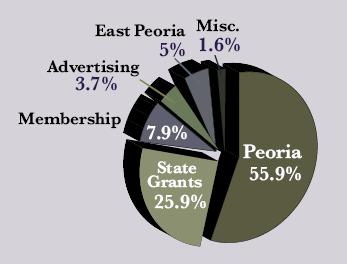Gee, I can hardly contain my excitement over news that downtown Peoria is going to get a new skywalk.
“We decided to move ahead with a skywalk project connecting 401 Water Street with buildings being renovated on Commercial Street,” said developer Kert Huber.
“It’s a $5 million to $6 million project. We’re doing this because the museum went forward. If the citizens of the area hadn’t got behind it, I would have walked away,” he said.
And then where would Peoria be? Imagine what would have happened had we lost this skywalk project: All those high-end condominium residents would have to walk outside to visit renovated buildings across Commercial Street. Oh, the indignity! Thank heavens the museum referendum passed so we didn’t miss this exciting development. [end sarcasm]
The real shame is that these skywalks, which are becoming more and more common in Peoria regrettably, will only hurt downtown commerce, not help it. Studies I’ve quoted in a previous post tell the story. Here’s a quote from Kathleen Hill:
Skywalk design in North America has frequently been critiqued for the barriers it has created between different levels of pedestrian circulation. (Cornell University, Transport and Society May 10, 2007) Skywalks are pedestrian bridges linking buildings at the second floor level creating a second-level city….
Critics of skywalks maintain that their proliferation has reduced street level activity. Kent Robertson (Pedestrianization Strategies for Downtown Planners, Journal of the American Planning Association, Summer 1993) states that businesses located on the street level have closed due to lack of pedestrian traffic and property values have declined. Kurt Anderson (Fast Life Along the Skywalks, Time Magazine, August 1988)
reports this lack of street level pedestrians and activities creates the perception of an inactive and dull downtown, stating that skywalks negatively impact street level retail and social activities.Some city planners feel that street level retail shops are the key to a vital and multi-use downtown. Critics are also concerned with the privatization of these public spaces and a separation of people based on class. Many of the skywalks link upscale hotels, shops and professional offices signaling to many low and moderate income people that they are not welcome.
So in addition to a museum block that will be devoid of street life because of its defective design, it’s spurring more development that will likewise keep pedestrians off the street. But since Peoria’s mantra is “all development is good development,” the project is promoted as an exciting, positive change for Peoria.

